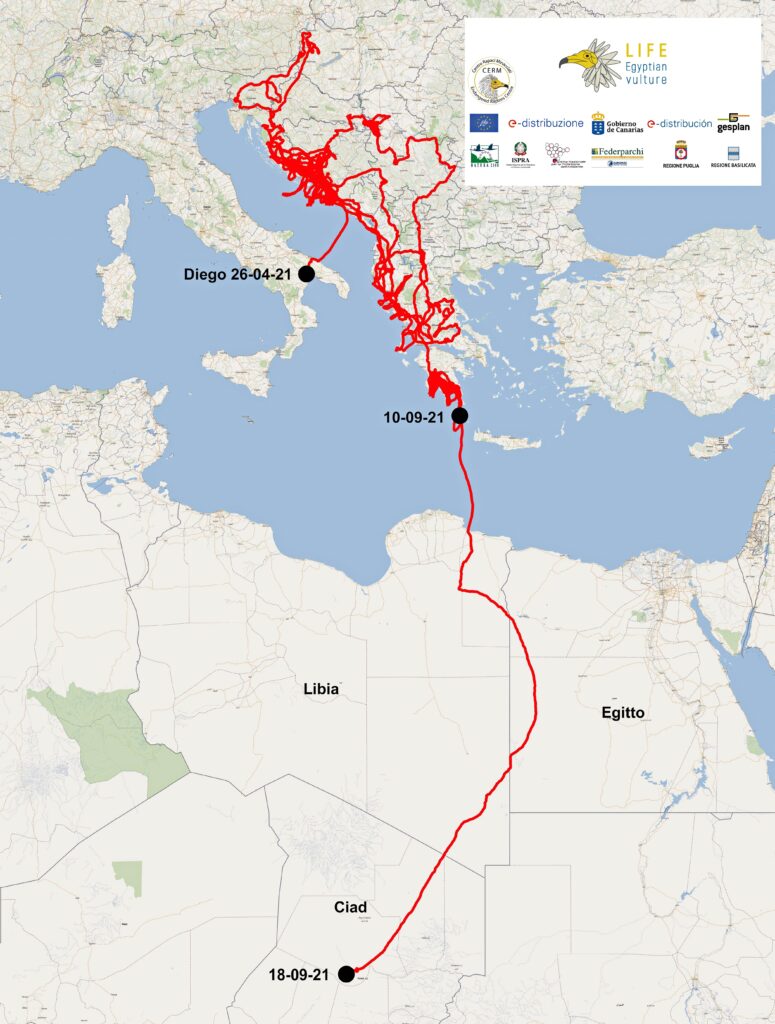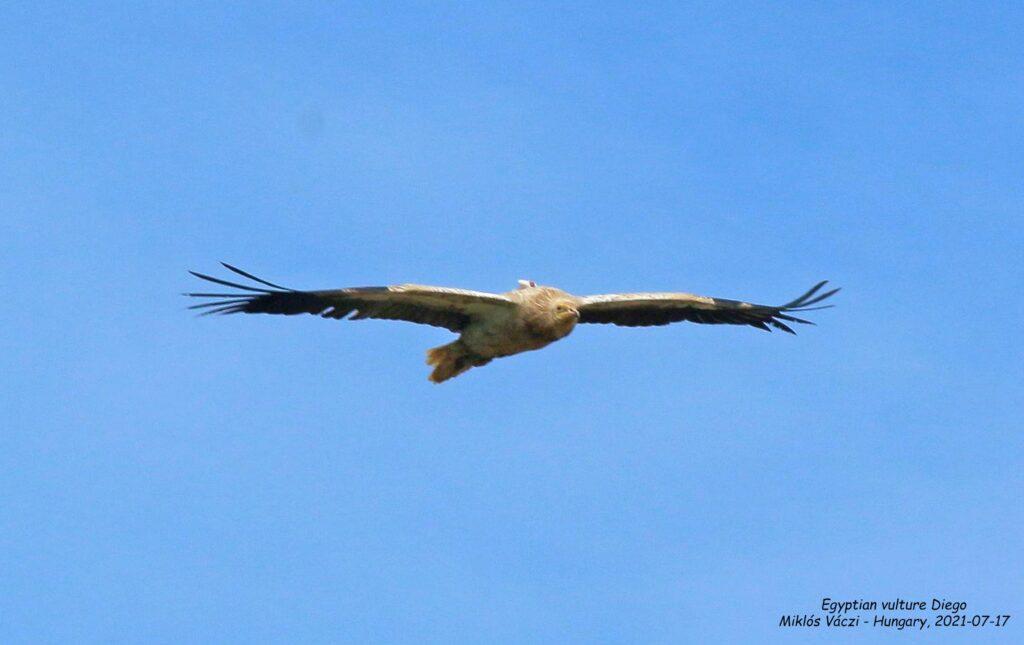In September 2021, at the age of three, the vulture Diego reached Africa for the first time. After crossing the northern part of the African continent, he stopped in Chad, a country he seems to have chosen as his wintering area.
Diego’s migration began on September 10, 2021 when the young vulture left the Peloponnese, a southern region of Greece where he had stayed for some time at the end of the summer, crossed the Mediterranean Sea and then reached the Libyan coast west of Tobruk.

The young Egyptian vulture travelled 440 kilometers before reaching Libya, flying over the sea for a good 10 consecutive hours. His adventure in Africa then continued with the crossing of Libya and Egypt and the arrival in Chad on September 16, after a journey of 2,600 km covered in several stages.
Diego had been released in Basilicata in 2019, at the age of one year, as part of the LIFE Egyptian vulture project and from this area he had left at the end of the summer to make a partial migration southward that led him to winter in Sicily. In spring 2020 the Egyptian vulture returned near the release area, from which it moved again to Sicily to spend autumn and winter there.
On April 2, 2021 Diego returned again to Basilicata and on April 26, after visiting the Murgia Materana Park where he had been released two years earlier, he headed east, crossed the Apulian coast and the Adriatic Sea and landed in Croatia. From this Balkan country he began an interminable journey during which, between April and September, he covered almost 19,000 km and visited 12 European countries (Albania, Bosnia-Herzegovina, Bulgaria, Croatia, Greece, Kosovo, North Macedonia, Montenegro, Romania, Serbia, Slovenia and Hungary).
Once arrived at the southern tip of Greece, Diego has made repeated “tests” of migration by making long flights over the sea in a southerly direction and then always return to the mainland, until he finally decided to make the great crossing of the Mediterranean.

Chad, the country where Diego is now, is a wintering area for the Egyptian vultures; the Italian vultures generally winter in more western areas of sub-Saharan Africa (Mali, Mauritania and Niger). This “deviation” to the east is not surprising since Diego’s migration began from the Peloponnese, thus leading him to take one of the routes used by the eastern Egyptian vultures to arrive in the wintering quarters: a very risky route, which involves crossing over 400 km of open sea that, unfortunately, are often prohibitive for young Egyptian vultures that are born in the nests of Greece and Bulgaria.

